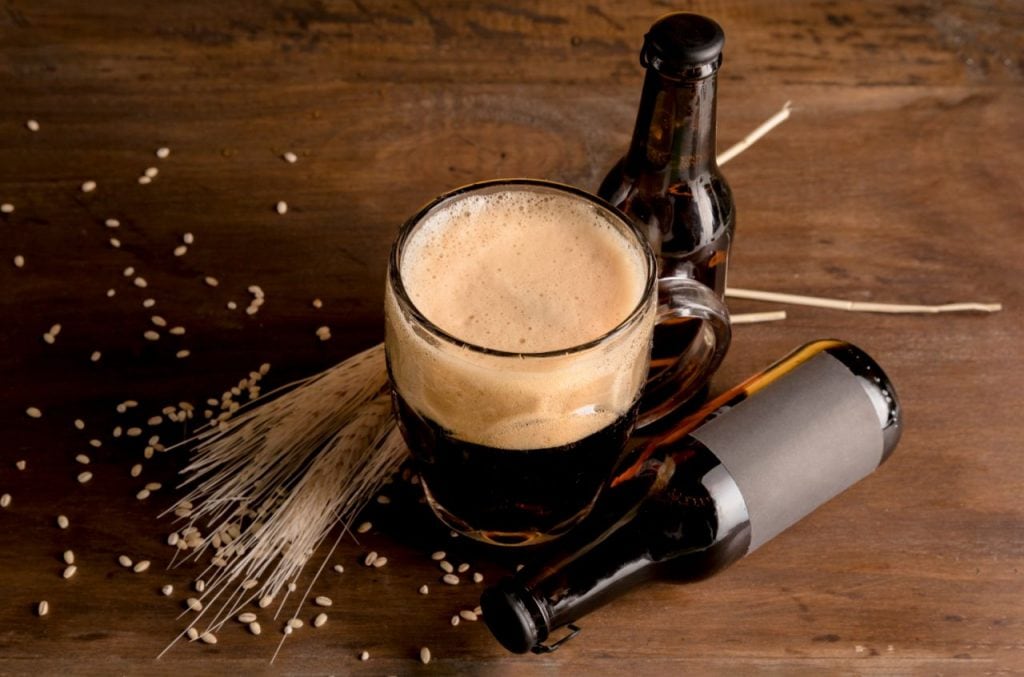Are you a beer enthusiast dreaming of starting your own brewery? The thought of crafting your own unique beer flavors and sharing them with others can be exciting, but it can also be overwhelming to know where to start. That's where we come in - we're here to guide you through the process and help make your dream a reality.
Starting a brewery requires a lot of planning and preparation. You need to consider everything from the type of beer you want to brew to the equipment you'll need to make it happen.
Are you looking for the perfect drink? From the Mornington Peninsula Brewery, Tar Barrel breweries and distilleries are producing some of Australia’s most outstanding craft beers, ciders and spirits.
Prepare A Business Strategy For A Brewery
Creating a business strategy is a crucial first step for any enterprise. It's crucial for attracting investors and serving as a guide for getting the firm off the ground. Information about your idea, target market, organisational structure, and financial standing are all essential parts of a solid business plan.
Choose A Brewery Concept
Your brewery's concept is what sets it apart. It affects everything from how consumers perceive your brand to the ads they see to the people you hire. Choosing a name, settling on a brand identity, and settling on the brewery's intended focus are all necessary steps towards defining your brewery concept.
Choosing a Name for Your Brewery
It's important to put a lot of thought into what you want to call your brewery because it will be associated with that name for a long time. As you brainstorm potential names for your brewery, bear in mind that great names tend to exhibit the following characteristics:
- The first and most obvious step is to make sure the name you want to use for your brewery is available. You should also avoid picking a name that sounds too much like another one. You can avoid legal trouble from other companies that may claim you've infringed on their trademark by taking this precautionary measure.
- Memorable: Choose a name that will stick in people's minds. Choose a simple name to spell and pronounce as a first step. Also, if you want people to remember your name, pick one that is easy to speak and enjoyable to pronounce.
- The name you choose should be indicative of the business itself. Make an effort to compile a list of the features that set your company apart from competitors. Breweries in Boston might select a name that reflects the region's rich history and heritage.
- Broad: Brewery names should be memorable and flexible enough for various goods and campaigns. Picking a name that is too particular will restrict development and development potential.
Establish Your Brand
Creating a name for your brewery's product is crucial to its success. Your brand's value lies in its ability to aid in developing relationships with consumers, spotting lucrative niches, recruiting top talent, and planning for your company's future.
The first step in creating a brand identity is settling on your company's core beliefs and principles. As part of your branding strategy, it's important to know what's important to your firm and its employees. Find out who you're selling to and how they feel about your products once you've done this.
Identifying a brand name and moving on aren't mutually exclusive. There needs to be some continuity after establishing your core beliefs, target audience, and emotional impact. Keeping your word and operating in line with the company's principles are essential. Getting your name in the industry, the neighbourhood, and among your staff can help you become a stable presence.
Choose Your Preferred Brewery
Thus, there are now many different kinds of breweries to satisfy the ever-growing beer market. Breweries range in magnitude, scope, and influence, but they can all be useful depending on your objectives.
- As the name implies, a nano brewery is the tiniest of breweries. A nano brewery's output is unrestricted until it reaches the microbrewery size threshold.
- Microbreweries are those that produce fewer than 15,000 barrels of beer per year. Most of the sales for these breweries occur directly at the brewery rather than through beer wholesalers.
- Brewpubs combine the best aspects of both restaurants and breweries. The majority of their beer is produced just for consumption in their bar.
- Professional breweries that sell beer directly to customers and through distributors but don't also serve food are known as taproom breweries. In many cases, the taproom is physically located within the brewery.
- An annual output of 15,100 to 6,100 barrels of beer distinguishes a brewery as a regional brewery. Breweries that produce more than that are household names everywhere.
- A contract brewing company outsources the production of its beer to other brewers. The contracted firm handles manufacturing and packaging, while the employing firm is responsible for marketing and distribution.
Choose a Site for the Brewery
Taking over an existing brewery is preferable. If you're just getting started, however, you'll need a vast facility to handle your taproom, massive brewing tanks, and everything else associated with your brewery.
Choosing the best spot for your brewery requires careful consideration of the following factors:
- What's Your Fashion Statement? Elegant? Casual? That can help you figure out who your target market is.
- Market Segment - People from all walks of life congregate in various parts of your city. Opening near a university is smart if you want to attract local college students. Install your business in a residential neighbourhood to draw in families.
- Accessibility and Parking - Tourists are less likely to have a problem finding a parking spot because they will most likely take a taxi or use a car service like Lyft or Uber. Tourists, on the other hand, are less likely to become regulars. Be mindful of this fact as you decide where to set up shop.
- Limitations on Breweries in the Area.
- Can you recoup the rent and utilities expenses from the clientele you expect to attract?
Compute The Initial Investment Need To Start A Brewery
Depending on the type of brewery you want to create, the initial investment may be significantly different. Several variables can affect the final cost of your brewery, such as the number of barrels per week you plan to brew, whether or not you intend to serve food and keep a dining room open, and the square footage of the site you plan to operate on. We have compiled an estimated cost breakdown of a brewery's many outgoings below.
- The cost of brewing equipment will vary depending on factors like the size of your brewery and whether you want to acquire new or secondhand machines. Brewing equipment with the smallest capacity can be purchased for about $120,000 if purchased used, while a brand new 35-barrel system can cost over $2 million.
- The price of restaurant furniture ranges from $4,100 to $15,100, depending on the type, material, and quality you're after for your brewery.
- Remember your brewery's monthly rent or mortgage payments while selecting a retail location. The utilities and brewing gear that you use must have adequate storage space. If you intend to run a taproom, you must also provide ample seating for your customers. Rent for a storefront can be anywhere from $10 to $30 per square foot, depending on several factors.
Check Brewery Licenses, Permits, And Legal Requirements
You'll need various permits and licences to run a restaurant that offers (or even makes) alcoholic beverages. Search for the specific criteria in your state online. A handful of the permits you'll need are listed here.
- Authorisation to Brew in the United States Federal System
- License to sell alcohol in a state
- Authorisation to Serve Food or Serve Alcohol
You might require a shop licence, a music licence, or a live entertainment licence if you plan to sell items and host live performances by local bands. Your bar could be shut down for something as simple as failing to obtain the necessary licence, so it's in your best interest to consult an expert to ensure everything is in order.
Hire People And Train Them.
Brewery management is no different from any other industry in that it relies on a well-trained, amicable workforce. For many new business owners, the first hires are for managerial and executive positions. Managers, team leaders, and department heads frequently set the tone and tempo for their teams, so it makes sense to start at the top and work your way down when hiring new members.
Have a solid strategy to attract talented new workers for your company. Promote a competitive starting salary and comprehensive benefits package. Make the interview process simple to attract the best possible candidates. Recruit leaders who share your vision by posting job openings that appeal to them. When advertising open positions at your brewery, be sure to provide a thorough description of the company's culture, goals, and methods of employee collaboration.
Assuming you've hired enough people, it's time to get them all on the same page and train them so you can open for business. There are three key justifications for spending money on quality employee training:
- Preparation. Investing in well-trained personnel increases the likelihood of your business's immediate and long-term success. All groups and departments are efficient and work well together.
- Satisfaction. Staff members who have received adequate training report higher levels of job satisfaction and confidence in their abilities to handle challenging situations. The happiness of both employees and customers might benefit from financial investments in training.
- Retention. In an e-learning institution, 40% of employees who need more training leave their posts during the first year of employment. Maintain a high rate of employee retention by giving your brewers the education they need to do their jobs well.
Your brewery's success will depend on the efforts of a committed team, from upper management down to the hourly workers. Strengthen the front-line staff's customer service skills through further training. For example, each employee at your brewery can double as a venue rental salesperson if educated on renting the space.
Create a company that is celebrated in the community as an exceptional workplace. To attract a strong team, you should promote your brewery as a small business that cares about and appreciates its employees. Recognise and appreciate your staff. Make employee appreciation a priority, but more importantly, offer a competitive salary and benefits package to attract and retain top talent.
Conclusion
Choosing a concept, a name, a brand identity, and a primary emphasis for the brewery are just some of the many decisions that must be made before opening the doors. A brewery's brand name is crucial to its success and should be something that is both distinct and easily recognisable.
Unlike professional breweries, which sell their beer to customers through distributors, taproom breweries, which produce more than 6,100 barrels per year, and contract brewing companies, which outsource production to other brewers, all fall under the category of "nano breweries," which produce fewer than 15,000 barrels of beer annually.
The initial cost of opening a brewery can differ widely, based on factors including the style of brewery being opened, the desired output in barrels per week, and the size of the available space. Improve your chances of attracting and retaining top personnel by offering attractive beginning salaries and benefits packages, finding and hiring managers who share your vision, and funding high-caliber training programmes.
Content Summary
- That's where we come in - we're here to guide you through the process and help make your dream a reality.
- You need to consider everything from the type of beer you want to brew to the equipment you'll need to make it happen.
- Creating a business strategy is a crucial first step for any enterprise.
- Information about your idea, target market, organisational structure, and financial standing are all essential parts of a solid business plan.
- Choosing a name, settling on a brand identity, and settling on the brewery's intended focus are all necessary steps towards defining your brewery concept.
- It's important to put a lot of thought into what you want to call your brewery because it will be associated with that name for a long time.
- The first and most obvious step is to make sure the name you want to use for your brewery is available.
- The name you choose should be indicative of the business itself.
- Picking a name that is too particular will restrict development and development potential.
- Creating a name for your brewery's product is crucial to its success.
- The first step in creating a brand identity is settling on your company's core beliefs and principles.
- As part of your branding strategy, it's important to know what's important to your firm and its employees.
- Identifying a brand name and moving on aren't mutually exclusive.
- Keeping your word and operating in line with the company's principles are essential.
- Getting your name in the industry, the neighbourhood, and among your staff can help you become a stable presence.
- As the name implies, a nano brewery is the tiniest of breweries.
- An annual output of 15,100 to 6,100 barrels of beer distinguishes a brewery as a regional brewery.
- A contract brewing company outsources the production of its beer to other brewers.
- If you're just getting started, however, you'll need a vast facility to handle your taproom, massive brewing tanks, and everything else associated with your brewery.
- That can help you figure out who your target market is.
- Install your business in a residential neighbourhood to draw in families.
- Be mindful of this fact as you decide where to set up shop.
- Depending on the type of brewery you want to create, the initial investment may be significantly different.
- Several variables can affect the final cost of your brewery, such as the number of barrels per week you plan to brew, whether or not you intend to serve food and keep a dining room open, and the square footage of the site you plan to operate on.
- The cost of brewing equipment will vary depending on factors like the size of your brewery and whether you want to acquire new or secondhand machines.
- Remember your brewery's monthly rent or mortgage payments while selecting a retail location.
- The utilities and brewing gear that you use must have adequate storage space.
- If you intend to run a taproom, you must also provide ample seating for your customers.
- Have a solid strategy to attract talented new workers for your company.
- Promote a competitive starting salary and comprehensive benefits package.
- Make the interview process simple to attract the best possible candidates.
- Recruit leaders who share your vision by posting job openings that appeal to them.
- When advertising open positions at your brewery, be sure to provide a thorough description of the company's culture, goals, and methods of employee collaboration.
- Investing in well-trained personnel increases the likelihood of your business's immediate and long-term success.
- Staff members who have received adequate training report higher levels of job satisfaction and confidence in their abilities to handle challenging situations.
- The happiness of both employees and customers might benefit from financial investments in training.
- Maintain a high rate of employee retention by giving your brewers the education they need to do their jobs well.
- Strengthen the front-line staff's customer service skills through further training.
- Create a company that is celebrated in the community as an exceptional workplace.
- To attract a strong team, you should promote your brewery as a small business that cares about and appreciates its employees.
- Make employee appreciation a priority, but more importantly, offer a competitive salary and benefits package to attract and retain top talent.
FAQs About Brewery
Quality control is crucial for producing consistent, high-quality beer. Implement quality control measures such as regularly testing ingredients and finished products, documenting brewing processes, and training staff on quality control procedures. Additionally, invest in equipment designed to maintain quality and consistency, such as temperature control systems.
Hiring staff for your brewery requires finding candidates with the necessary skills and experience. Consider hiring a head brewer with a brewing degree and experience in the industry. You will also need to hire staff for positions such as bartenders, servers, and kitchen staff.
The type of beer you choose to brew will depend on your personal taste and market demand. Conduct market research to determine what types of beer are popular in your area and what your competitors are offering.
Location is crucial for a successful brewery. You will want to choose a location that has good foot traffic, easy accessibility, and is in a desirable area. Consider factors such as zoning restrictions, local competition, and the cost of rent or lease.
To start a brewery, you will need equipment such as brewing kettles, fermenters, pumps, hoses, canning or bottling line, and refrigeration units. You will also need cleaning and sanitation equipment and an inventory management system.
















